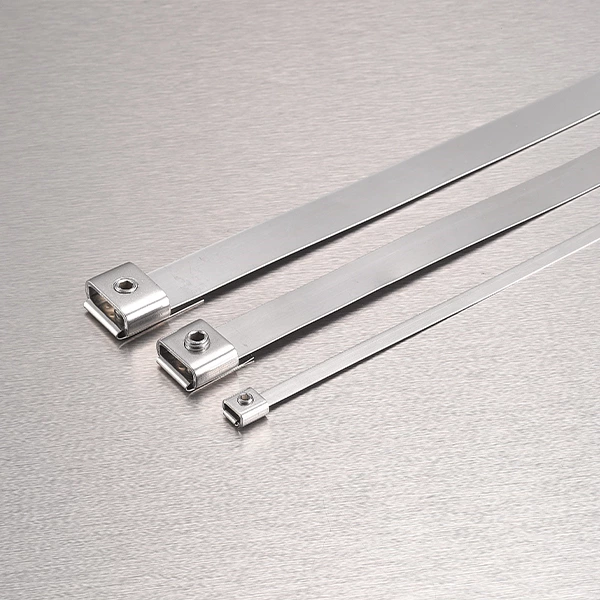How To Correctly Select Stainless Steel Cable Ties?
In industrial production and daily life, black metal cable ties are widely used for cable bundling, pipe securing, and equipment support. Choosing the right cable tie not only improves work efficiency but also ensures structural safety and stability. The following will provide a detailed analysis of how to correctly select heavy duty metal cable ties from multiple perspectives.
Key Factors to Consider When Selecting Stainless Steel Cable Ties
Identify the Application Environment and Requirements
The first step in selecting a cable tie is to understand the application environment. Different working environments have different requirements for cable ties:
-
Indoor environments: Such as offices and homes, where humidity is low and temperature is stable. In these cases, standard 304 stainless steel cable ties are sufficient.
-
Outdoor or humid environments: Such as construction sites and coastal areas, where humidity is high and salt spray corrosion is severe. 316 stainless steel cable ties are recommended, as they offer superior corrosion resistance to 304.
- High-temperature environments: For high-temperature equipment such as boilers and heat exchangers, cable ties with stronger heat resistance, such as Inconel alloy cable ties, should be selected.
Select Based on Specifications and Size
The specifications and size of a cable tie directly affect its load-bearing capacity and applicable range. Common specifications include:
-
Width: Common widths include 4.6mm, 7.6mm, and 12.7mm. The wider the width, the greater the load-bearing capacity.
-
Thickness: Generally ranges from 0.3mm to 0.5mm. The thicker the thickness, the stronger the cable tie.
-
Length: Choose according to your needs. Common lengths include 200mm, 300mm, and 500mm.
When selecting, determine the appropriate specification based on the diameter and weight of the object being secured.
Understanding Common Types and Features
Common coated stainless steel cable ties include:
-
Standard: Suitable for general environments and cost-effective.
-
Locking: Features a self-locking function and is suitable for applications requiring long-term securing.
-
Double-lock: Provides stronger securing force and is suitable for heavy equipment.
-
Double-loop: Suitable for applications requiring dual securing, such as bridge construction.
Choose the appropriate type based on your needs to ensure effective securing.
Consider the Installation Method and Tools
When installing stainless steel twist ties, choosing the right tools is crucial. Common installation tools include:
-
Hand tools: Suitable for small-scale installations and easy to use.
-
Power tools: Suitable for large-scale installations and improve work efficiency.
-
Pneumatic tools: Suitable for high-strength fastening and provide greater pulling force.
Select the appropriate tool based on the workload and fastening requirements to improve installation efficiency.
Maintenance Tips for Extending the Service Life
Maintenance is essential to ensure the long-term and stable performance of cable ties with metal lock. The following are some common maintenance tips that can effectively extend the service life of stainless steel cable ties:
-
Regular Inspection: Periodically inspect cable ties for looseness and signs of rust. Regular inspections are especially important in humid environments.
-
Cleaning and Maintenance: Clean cable ties regularly, especially those exposed to the elements. Use a neutral detergent and a soft cloth to clean them, avoiding contact with strong acids and alkalis to prevent corrosion.
-
Avoid Overtightening: During installation, avoid overtightening cable ties, as this can cause deformation and compromise their strength.
-
Preventing Mechanical Damage: During installation or use, avoid colliding cable ties with hard objects to prevent surface damage and compromise their holding ability.
These simple maintenance measures can effectively improve the durability of stainless steel cable ties, reduce damage caused by environmental factors, and ensure long-term, stable operation.
Summary
Choosing the right stainless steel cable tie is crucial to ensuring project quality and safety. By understanding the intended use, selecting the appropriate specifications and types, using the appropriate installation tools, and performing regular maintenance, you can improve work efficiency and ensure effective holding. We hope the above information provides guidance and assistance during your selection process.
If you're looking for a durable, reliable, and performance-tested solution, Xuanchang Group offers a wide variety of metal cable zip ties designed specifically for industrial and commercial applications.



